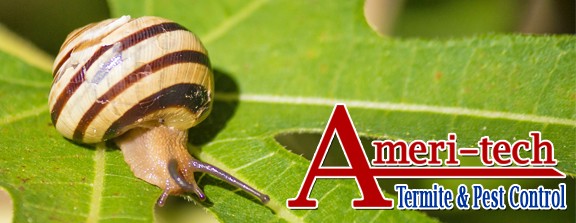Kaufman, TX Pest Control
 Pest Control in Kaufman, TX
Pest Control in Kaufman, TX
At Ameritech Termite & Pest Control of Kaufman TX, we pride ourselves on offering excellent customer service. We have been proudly servicing businesses and homes in the Dallas Fort Worth Metroplex for over 30 years. If you need any kind of pest control service in Kaufman, contact Ameri-Tech Termite & Pest Control Company. We are a locally owned business that focuses on the total removal of all your bugs, ants, spiders, etc. We care about our customers, and you can trust us to do the job right the first time.
Our business philosophy is straightforward: deliver the kind of service we would want for ourselves. This belief drives us to foster strong customer relationships and ensure that every interaction is rooted in respect and understanding. We believe that a personal touch and dedication to quality are what differentiate us in the pest control industry.
- Customer-Centric Approach: We listen to your concerns and tailor our services to meet your specific needs, ensuring a pest-free environment while building lasting relationships.
- Commitment to Excellence: Each service is executed with attention to detail and a commitment to effectiveness, providing peace of mind that your home or business is in capable hands.
By combining our extensive experience with a heartfelt commitment to customer satisfaction, we continue to set the standard for pest control services in Kaufman and beyond.
Facts About Kaufman, TX - Kaufman, the county seat of Kaufman County, is at the intersection of State highways 34 and 243 and U.S. Highway 175, thirty-four miles east of Dallas near the center of the county. The original inhabitants of the area were Caddo, Cherokee, Comanche, Delaware, and Kickapoo Indians. The first whites were forty families led by Mississippian Dr. William P. Kingqv, who arrived in the area in 1840, purchased 2½ square miles of land, and built a fort on a hilltop that overlooked his new home. -TSHA
Kaufman, TX Pest Treatments
-
Tue
 87 °F
87 °F
Pest Control Solutions in Kaufman, TX
Bed bugs love to attack in the evening and will remain active until before dawn. They bite uncovered skin of a man or woman sleeping in an infested bed, leaving reddish-colored, scratchy bites. Although they don’t usually wander far from sleeping and relaxing areas, they can travel over 100 feet at night in search of food.
Kaufman TX Bedbug Treatments
Interestingly, you don’t need to spot a bed bug to identify an infestation. Look for signs like brown to black stains on mattresses and linens, which are their excrement, or bloodstains where bed bugs have been accidentally crushed.
Bed bugs were once terminated in the US but are making a comeback with the help of international travelers. They are commonly found in resorts and apartment buildings. Bed bugs can survive up to a year without food, allowing them to travel from different locations until they find a comforting place with food. They hitchhike on clothes and suitcases of travelers and can live in couches, transferring from property to property through used furniture.
Domestic animals like cats and dogs, with their thick fur, provide excellent hiding places for bed bugs. Additionally, riding public transit like shuttle buses, trains, and taxis can bring you into contact with bed bugs, which you then take to your residence. These six-legged parasitic creatures draw human and dog blood, making them a persistent nuisance in both urban and suburban environments.
Serving Kaufman, TX

Rodents In Kaufman, TX
Termite Treatment Kaufman, TX
 Termite Treatment in Kaufman, TX
Termite Treatment in Kaufman, TX
Termites feed on dead vegetation and trees in the dirt. A wood eating termite's jaws are capable of splitting parts of woody substance. This particular capacity is exactly what will cause worry within homes. An average community of subterranean termites may eat 16 grams of wood each and every day. That is about 13 lbs. of lumber each year. Termite workers merely measure from 1 cm to a couple millimeters long, their eating habits are effective at causing costly damage to property. Property foundations, furnishings, book shelves and books are eating sites for termites.
How to Differentiate Termites from Ants
Identifying whether you are dealing with termites or ants is crucial, especially since they tend to swarm during the same time of year. Here’s how you can tell them apart:
-
Antennae: Termites have straight antennae, whereas ants have elbowed or bent antennae.
-
Body Structure: Termites have a more uniform, tube-like waist, compared to the narrow, pinched waist of ants.
-
Wing Size: In termites, both pairs of wings are of equal size and longer than their body. Ants have a pair of wings, the front pair being larger than the hind pair.
Importance of a Wood-Destroying Insect Report (WDI)
A Wood-Destroying Insect Report is an essential document that provides detailed information on the presence or absence of pests like termites, woodboring beetles, and carpenter ants in a property. Here’s why it's crucial:
-
Property Value Protection: It helps assess the current condition of the property, ensuring you're aware of any potential damage that could decrease its value.
-
Preventative Measures: Knowing the status of wood-destroying insects allows for timely preventative action, reducing future repair costs.
-
Informed Decisions: Whether buying or selling a property, a WDI report equips you with vital information to make informed, confident decisions.
Acquiring a Wood-Destroying Insect Report not only safeguards your investment but also provides peace of mind by ensuring the structural integrity of your property.
Flea & Tick Treatments in Kaufman
Understanding Fleas, Ticks, and Chiggers: Characteristics and Risks
When it comes to pests that can cause discomfort or health risks, fleas, ticks, and chiggers are top contenders. These tiny creatures not only irritate with their bites but also pose significant health dangers. Let’s delve into their characteristics and associated risks.
Fleas: Small Yet Mighty
Fleas are tiny, wingless insects. They belong to the order Siphonaptera, known for their specialized mouthparts perfectly suited for piercing skin and extracting blood.
-
Characteristics:
- Fleas are incredibly agile jumpers.
- They’re typically brown or reddish-brown.
-
Risks:
- Aside from causing itchy bites, fleas are infamous for transmitting diseases such as tapeworms and even the bubonic plague.
- They primarily target pets but can easily latch onto humans, making them a household nuisance.
Ticks: Stealthy Parasites
Ticks, although not insects but arachnids, are notorious parasites that easily attach to both humans and animals.
-
Characteristics:
- Ticks vary in color but are generally dark and can swell significantly as they feed.
- They are often found in grassy or wooded areas.
-
Risks:
- They are vectors for numerous diseases, including Lyme disease, Rocky Mountain spotted fever, and ehrlichiosis.
- Ticks are adept hitchhikers and can latch onto clothing and skin unnoticed, leading to unexpected transmission of these diseases.
Chiggers: Tiny Irritants
Chiggers are the larval stage of a mite, often referred to as redbugs.
-
Characteristics:
- These larvae are nearly invisible to the naked eye, measuring only about 1/150 of an inch.
- Despite their size, they are recognized by their irritating bites, which can cause intense itching.
-
Risks:
- While chiggers don’t transmit diseases, their bites induce uncomfortable, itchy welts that can lead to secondary infections if scratched excessively.
- They thrive in late spring through fall, often hiding in grassy or densely vegetated areas.
Conclusion
Understanding these pests is crucial to mitigating their impact. While fleas, ticks, and chiggers each present their unique challenges, avoiding areas where they thrive and using protective measures can significantly reduce the risks they pose. Always be vigilant during outdoor activities to safeguard against these persistent pests.
Why is Mosquito Control Important in Kaufman Texas?
Mosquito control is crucial in Texas due to both health and lifestyle impacts. The state's warm climate creates an ideal breeding ground for mosquitoes, making it essential to manage their populations effectively.
Climate's Role in Mosquito Populations
-
Warm Weather Hub
Texas is known for its high temperatures and humid conditions. These factors create a perfect environment that accelerates mosquito breeding cycles—more heat means mosquitoes mature faster, increasing their numbers. -
Unpredictable Weather Patterns
The state's famously erratic weather—often shifting from rain to sun in a single day—further fuels mosquito proliferation. Rainfall provides stagnant water, essential for mosquito breeding, while sunny days prolong their active periods. -
Extended Outdoor Season
Texans enjoy long periods of outdoor activities due to mild winters. This extended outdoor season increases human-mosquito interaction, elevating both the annoyance factor and the potential health risks, such as West Nile Virus and other mosquito-borne illnesses.
Importance of Control Measures
Proper mosquito control not only enhances quality of life by reducing nuisances but also mitigates health hazards. By managing mosquito populations, Texans can enjoy their outdoor spaces safely and comfortably.
Conclusion
Effective mosquito control in Texas is imperative due to the state's unique climate conditions that foster mosquito growth. By understanding and addressing these environmental factors, residents can protect their health and fully enjoy the benefits of the Texan outdoors.



